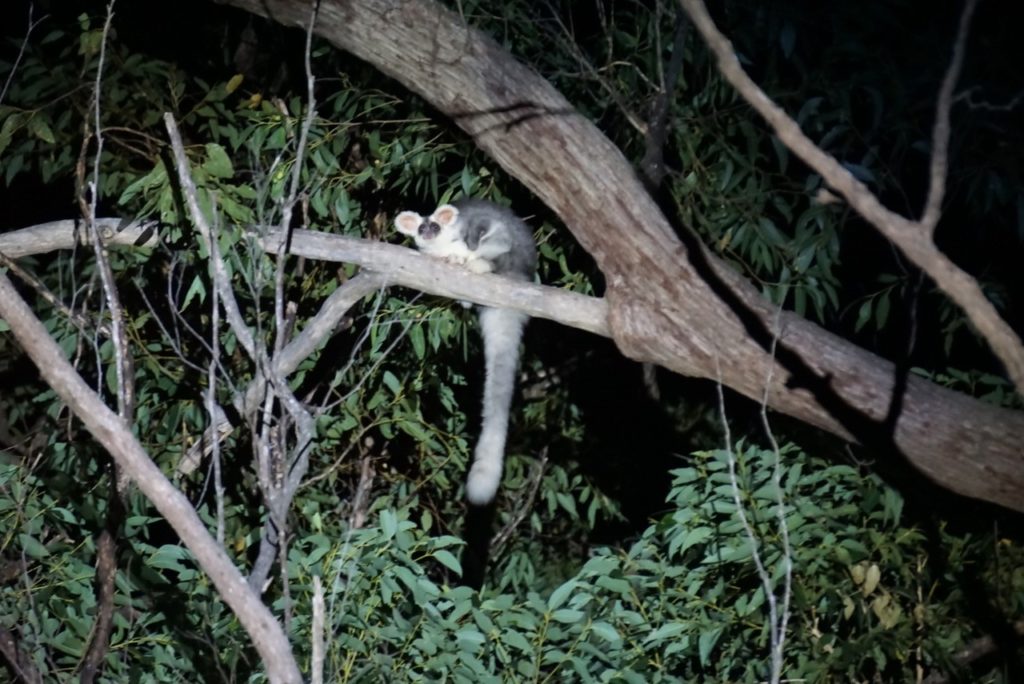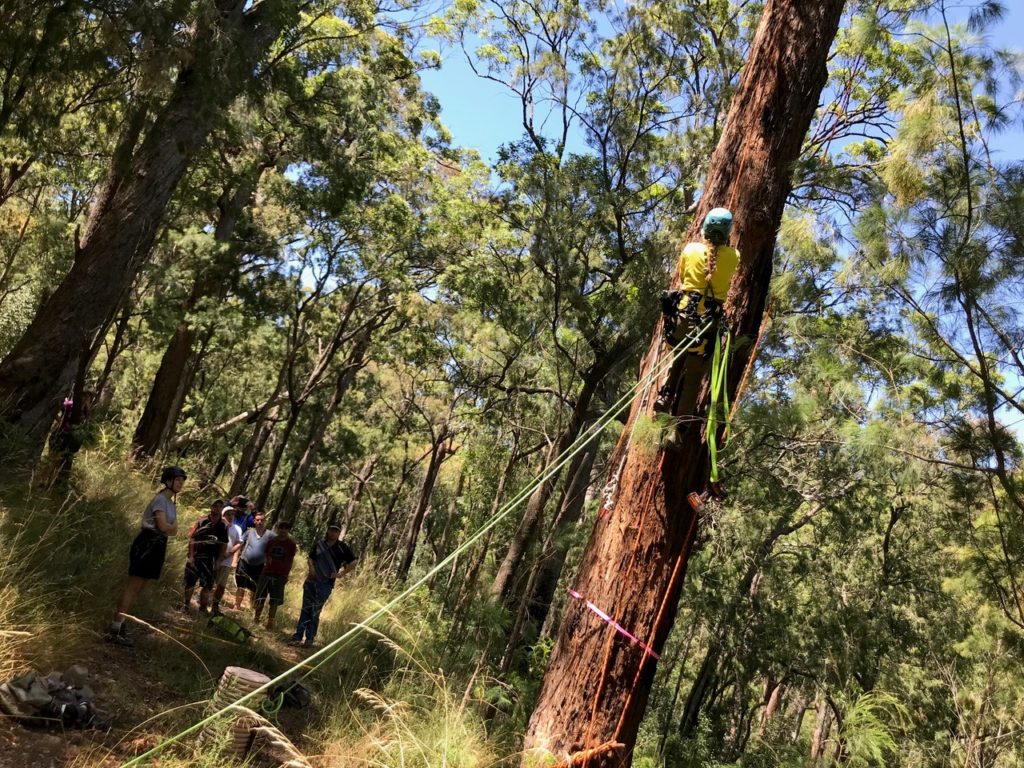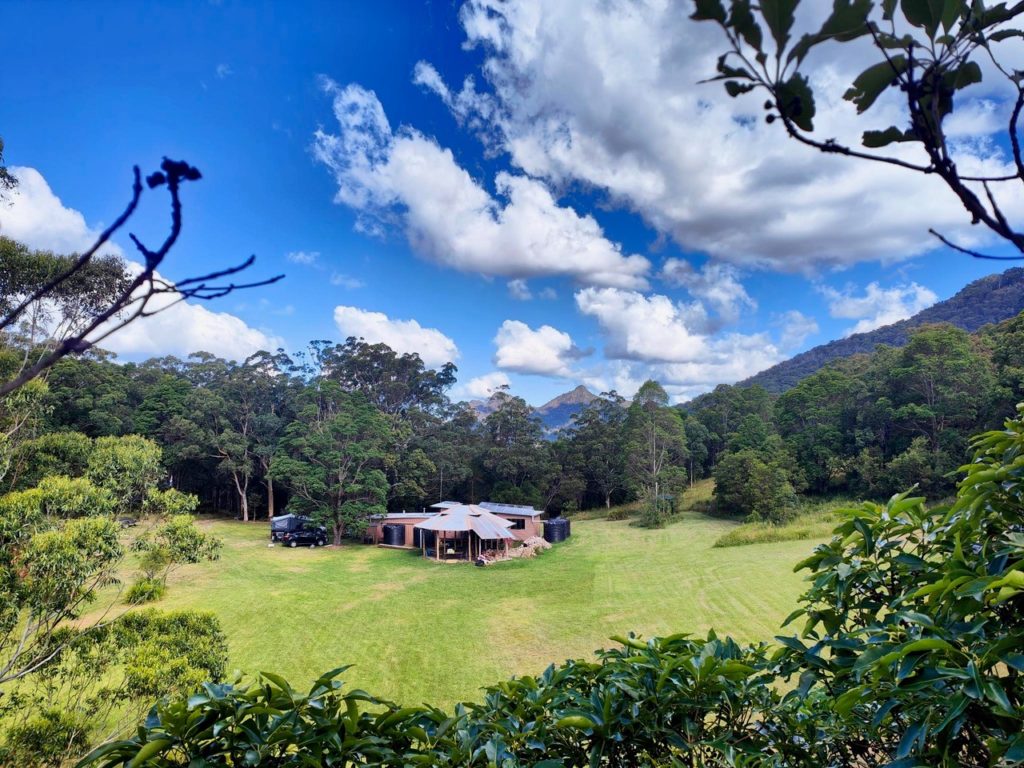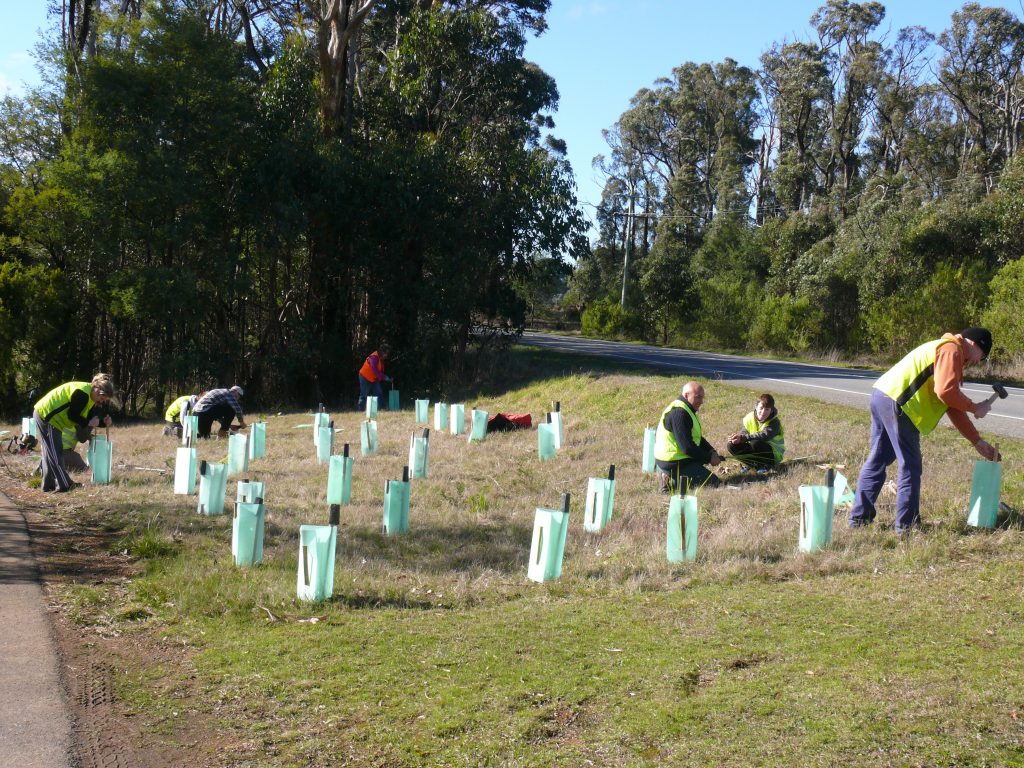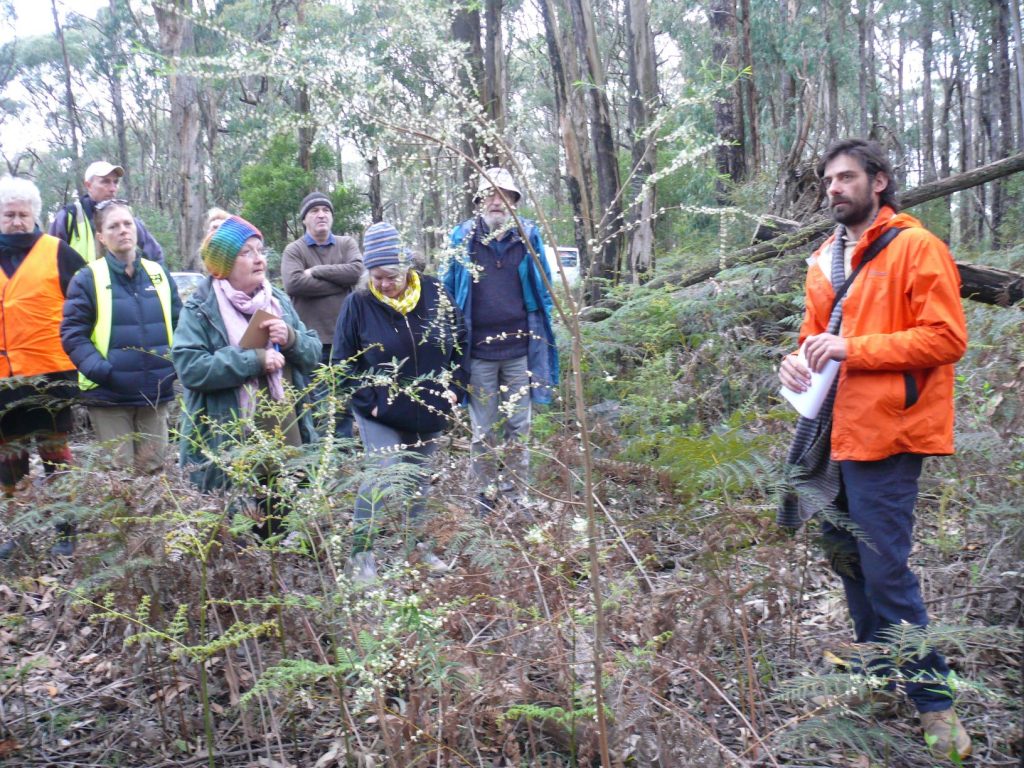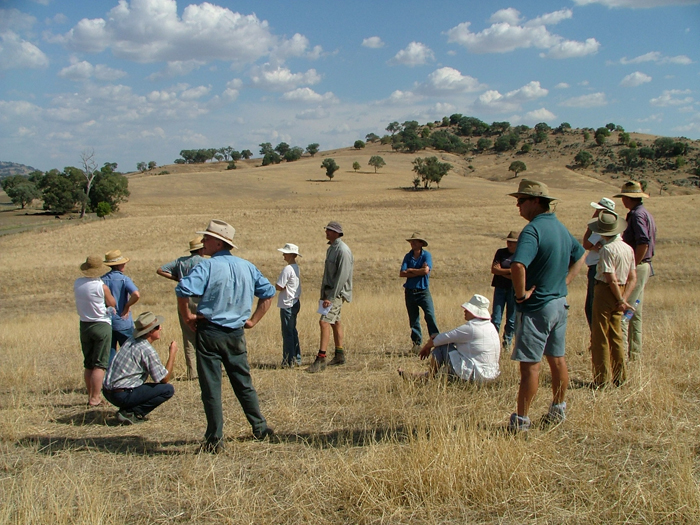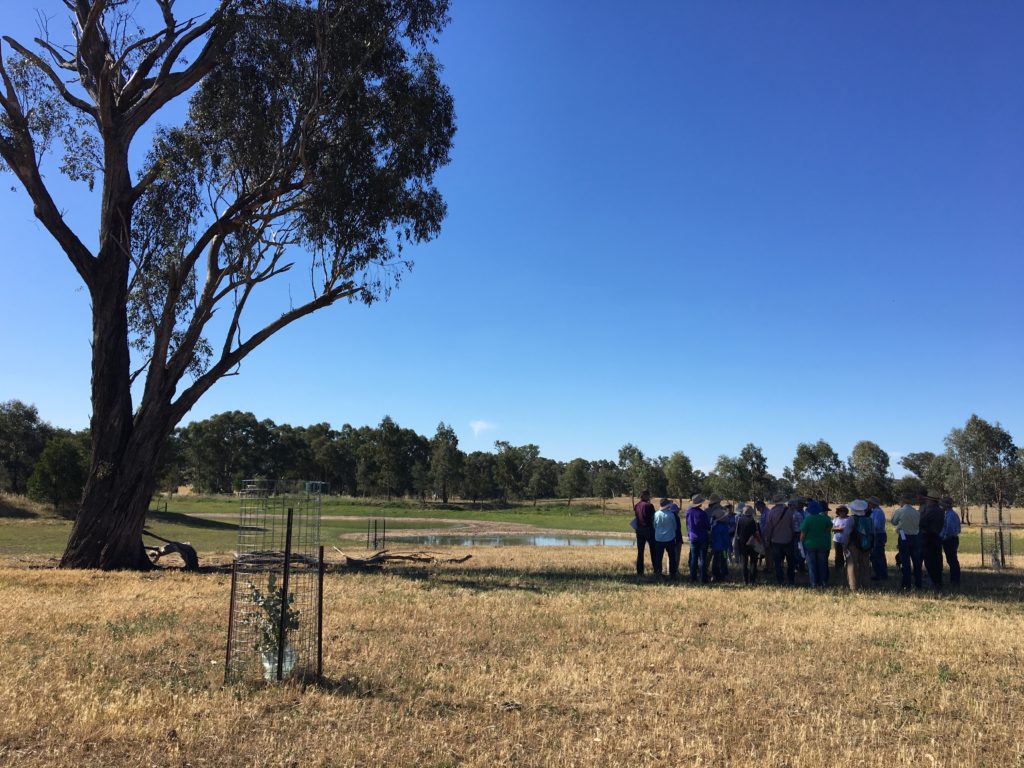Foundation for Rural & Regional Renewal (FRRR)
Boonah and District Landcare Association has taken up the challenge to develop a home-grown housing solution for Mount Barney’s greater gliders housing crisis created by the Black Summer bushfires that swept through local bushlands in 2019-20.
Greater gliders live in tree hollows and like to move around a little, so one glider needs multiple tree hollows to hide, sleep and raise a family. There is no fast solution for gliders affected by the Black Summer fires. Many nests were destroyed, and it can take a hundred years for forest trees to age and develop suitable hollows.
Artificial nest boxes made using standard plywood construction are not suitable for the greater gliders, who are easily stressed by heat. The innovative Landcare nest tubes are lined and painted white with a high-tech reflective paint for additional heat control.
Project Coordinator Ian Beale explains, “It’s been a huge effort to design something durable, affordable, and easy to install. We’ve had advice and feedback from experts at southern universities and we engaged a scientist from the University of Wollongong to oversee installation of nest tubes at Bartopia. We are serious about evaluating this new design.
“It was a community project supported by grant funds and volunteer efforts. A real team effort, and so many locals have been involved”, he said.
Scenic Rim Regional Council provided funds for construction materials. Volunteers from Boonah and District Landcare, Carinity Fassifern Community Centre and Maroon State School help build the tubes. The Wettenhall Foundation supported a small number of local climbers to gain the qualifications and insurance they need to help landowners with installations, while a $24,014 Strengthening Rural Communities Prepare and Recover grant funded by Global Giving contributed to the survey work and installation of nest tubes, as well as technology and expertise to evaluate how they are used over the next 12 months.
Twenty-three tubes were installed in March 2023 around Bartopia Nature Refuge adjacent to Mount Barney National Park. Clients of the Fassifern Community Centre visited Mt Barney to observe a nest installation, and students later watched a demonstration installation at Maroon State School.
The SRC grant also supported teachers, parents and students to camp overnight at Mt Barney and enjoy a spotlighting opportunity, for the children to see personally the greater and other gliders in their natural habitat (much to their delight).
The only significant thing left is for the scientist-arborists to return next February-March to monitor the installed nests and cameras.
In the 12 years since the 2009 Bushfires, almost half of the residents of Kinglake are new to the area. So the work of Kinglake Landcare Group is important in helping to improve the new residents’ understanding of their natural environment and the importance of fire safety. As a subsidiary of Kinglake Ranges Neighbourhood House (KRNH), Kinglake Landcare Group provides support to the natural environment of Kinglake by undertaking community engagement activities and promoting sustainable agriculture.
With support from our Grants for Resilience & Wellness – Kinglake Ranges (GR&W Kinglake) program, Kinglake Landcare Group was able to make quite an impact on the community with their organised activities. The Group used their GR&W Kinglake grant to facilitate bushwalks and workshops to provide a practical way for residents to become familiar with the native flora, including how to care for it.
Geordie Scott-Walker, a botanist from Wildlife Experiences, guided a group of 22 enthusiastic participants on a walk from Captains Creek Road. Along the way Geordie would stop and identify local plants, explaining each ecosystem and the importance of the relationships between plants and the environment. After a quick lunch break, the walkers were then led to the nearby Wombelano Falls where the lesson continued. Social media posts allowed residents from surrounding areas, including Whittlesea and Strath Creek to participate in the activity as well.
The grant also made it possible for Kinglake Landcare Group to hold a propagation workshop with horticulturalist, Michael Cincotta, from the Latrobe Wildlife Sanctuary. Residents were shown how to grow indigenous flora through seeds and cuttings. The pots, soil and stakes were provided at the workshop. Attendees were able to take home their own small clipping of the Round-Leaf Pomaderris plant, which is endangered in the Kinglake area.
The success of these events prompted Kinglake Landcare Group to schedule more walks that have been postponed due to the coronavirus. With the enthusiasm and support from other nearby towns, the natural environment of Kinglake ranges will continue to improve and flourish.
By attending either of the activities these local communities were able to build on the knowledge and understanding of their natural environment. The hope is that each resident who participated in the walk or workshop will continue to share the information with others. The skills learnt at the bushwalk and the workshop have given individuals the power to help maintain the natural flora and take an active role in their community.
The impact of investing in resilience
Hovells Creek Landcare (HCL), NSW received an FRRR grant to support a series of workshops to increase land management knowledge and strategies, at the same time as strengthening community and social connections and wellbeing.
When drought strikes, the toll of the dry land can have an overwhelming impact on a farmer’s livelihood, family and community.
The group has been running workshops on drought and land, and resource management with expert speakers, using a $19,554 Tackling Tough Times Together grant received in the thick of the drought.
These workshops provided Landcare members with the latest thinking and resources for drought management, as well as a social interaction opportunity. They aimed to support farmers and community members to feel that they are doing their best for their livestock, their landscape, their families and themselves – to plan for the future, as much as the present.
To assist with volunteer fatigue impacting the HCL during the demanding drought, the grant also helped to fund a Coordinator to manage the workshops. The Coordinator organised expert speakers, promoted the events and arranged the venues and catering. The grant also funded any expert guest fees and travel expenses.
Experts spoke on topics ranging from managing mental health, to soil and moisture monitoring, and livestock feeding strategies.
Around 50 to 70 people participated, including a mix of Landcare members and local landholders, but with sessions shared online and in newsletters and local media, the insights were shared widely. The participants varied in terms of their level of knowledge and understanding of climate change and its impacts. They all had differing community and individual pressures as a result of the ongoing drought, and were presented with a suite of options to help them respond.
According to one of the former committee members, the workshops had the following impacts on participants: an increase in wellbeing, knowledge and capacity – with much greater awareness of climate change scenarios and importantly the likely local impacts. They learnt about tools, technologies and improved land management practices to effectively, sustainably and productively manage natural resources and adapt to significant changes in climate.
As a result of FRRR’s support for the project, funded by the Stockland CARE Foundation, HCL was able to secure more funding for a soil moisture probe in the Valley to enable producers to access real time moisture levels, rainfall and soil temperature data. This probe will help with plant management and maximise growth opportunities both now and into the future.

Clarence Landcare is located in regional NSW. Their mission is to promote sustainable land, agriculture, water, vegetation and biodiversity management practices and principles to their local community.
The largely volunteer-run organisation has been taking care of the land in the region for more than two decades. They regularly running community projects and initiatives focused on sustainable land care. The team also hosts workshops at their head office to educate and engage the wider community.
Located in the main street of Grafton, the Clarence Landcare office is in the 100-year-old Dougherty House. After the building was recently repainted giving the exterior of the building new life, it became clear that the interior was in desperate need of an upgrade.
Not only had the furniture been in use for more than 20 years, the team was also lacking basic essentials to help their meetings and workshops run smoothly. There was mismatching furniture and outdated technology made it very difficult for members to join meetings remotely.
The team applied to the FRRR Small Grants for Rural Communities program, and received a $5,000 grant to help them upgrade their workspace. The funding, made possible thanks to The Yulgilbar Foundation, provided improvements such as new blinds, couches, coffee tables, rugs and faux plants, giving new life to the old office.
In addition to the furniture, the funding was also used to purchase some much-needed technology, including a new iPad, Smart TV with a TV stand on wheels, web cam and microphone. This technology has enabled the team to dial into meetings remotely, making it easier for Clarence Landcare staff to stay connected digitally.
“I feel we are heading in a great direction now thanks to this FRRR grant, we don’t need to look like a poverty stricken not-for-profit organisation anymore. We now have the vision and committee support to keep improving our public face of Clarence Landcare. This will really help us gain confidence and attract clientele for future projects. The function of every new piece of equipment has far outweighed the predicted benefits,” said Landcare Officer Debbie Repschlager.
Drake is a small town in the shire of Tenterfield, located on the border of NSW and QLD. With one pub, one shop, one community centre and most properties coming in at around 100 acres, there is little opportunity for interaction and entertainment between community members. There was an interest among residents in learning more about permaculture, particularly as the land can be quite unforgiving when trying to grow food and plants.
The Granite Border Landcare Committee (GBLC) saw an opportunity to teach the community new skills, create new shared community resources and foster connections and relationships between neighbours through the creation of a six-part permaculture workshop series.
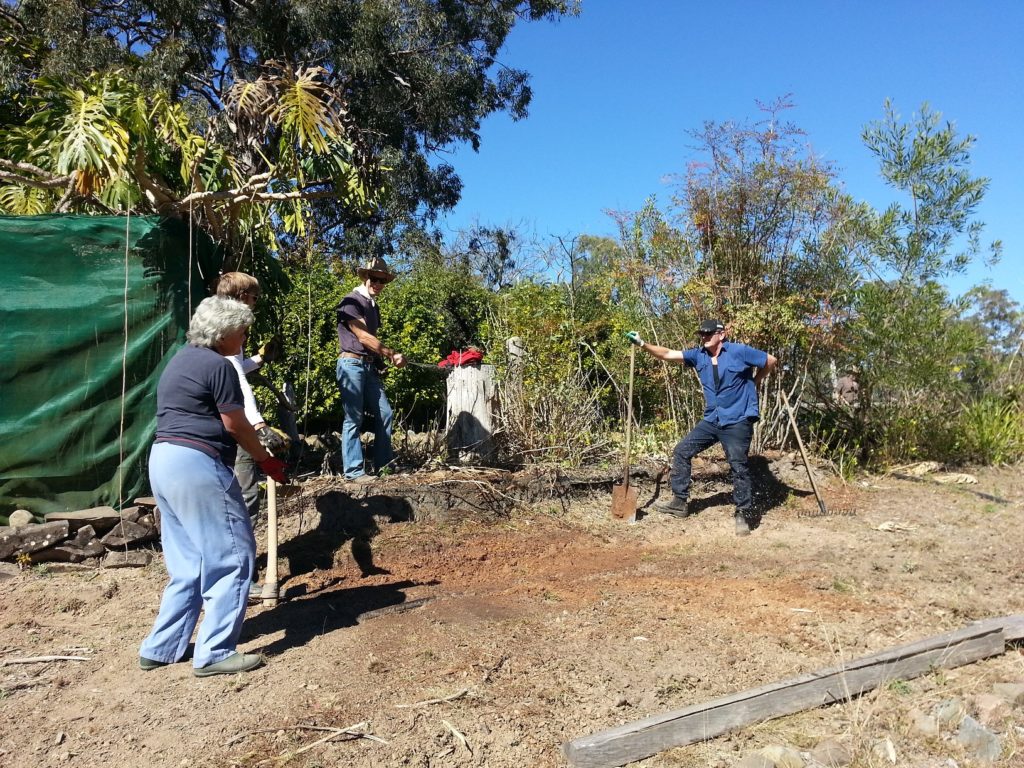
With a $4,000 Small Grant, funded by The Yulgilbar Foundation, the GBLC was able to create and deliver this workshop series over a six month period.
Amanda Craig, who managed the program, said the project established a strong, energetic, community focused group with a core membership of 10 people.
“While the overall aim was to establish a permaculture group, which it has done, the community benefits are greater than that.”
“The group members and other interested people that attended workshops have established strong ties within the small isolated community and are now branching out to include other activities as the recent garden make over at the community resource center,” Amanda said.
The workshops included Build a Chook Pen, Build a Raised Garden Bed in a Mandala Circle Garden, Learn to Build Compost Bays, Building Swale’s Workshop, Propagating Vegetable Seedlings, Build a Wicking Bed and How to Build a Greenhouse. The six-month series helped to build community connectedness, improve local community infrastructure, and develop a volunteer community group.
Since completing the series, this group has continued to hold workshops and is working on beautifying the garden around the local community centre.
The Sunset Strip Village is located on Menindee Lakes in NSW and has experienced severe drought cycles for the past seven years. Without a water supply for the Community Centre Precinct lawns, Landcare Nursery and land restoration sites, the areas turned brown and undesirable.

The psychological and economic impact of the long-lasting drought has led to painful shortfalls for the community, including the tragic death of a much-loved local volunteer. In addition, at least 28 families in the agricultural industry have abandoned the area, with weekend residents quick to follow suit. The result was a drying and demoralised Sunset Strip, with a third of its houses up for sale.
The Sunset Strip Progress Association Inc (SSPAI) is a locally run not-for-profit, co-managing everything from the local pub to the post office. This resilient group of volunteers have tackled drought-related challenges in the community since 2012, and they were not about to give up their sunny strip. SSPAI knew what their village needed in order to not only survive, but grow and thrive as a small rural community – and they were willing to put in the work to make it happen.
The idea was simple: make the area green and prosperity will follow. The project has well-received by the community as it they all wanted to see the Community Centre Precinct flourish, a restoration of Landcare plantations, and an increase in lifestyle, liveability and house sales with new residents.
Thanks to a $19,070 Tackling Tough Times Together grant funded by the Australian Government, the Sunset Strip Progress Association purchased a submersible pump, a 1,000-watt solar panel, a water controller, a pressure solar pump and 3,300-gallon water tank to a create a permanent groundwater source for the 6,000 sqm flourishing community lawn around the Community Centre Precinct.
Since this much-needed investment, the benefits in the whole village have been obvious. The Sunset Strip Village has welcomed three new families and seen an overall renewed positive atmosphere in the community. The Landcare Nursery Team are growing seedlings that will ensure future growth and thriving greenery – making the Village a desirable destination to work and live again.

